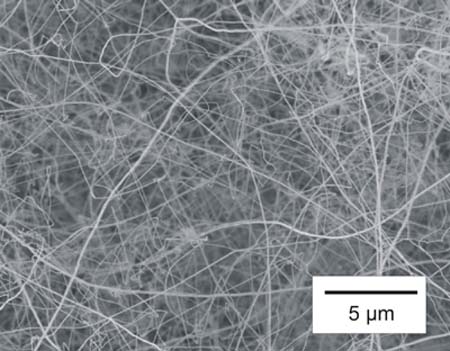- Oligophenylene vanillin nano wires section
Propagation of Oligophenylene vanillin nanowires by focused ion beam (FIB) nanolithography method (below 100 nm - 10 nm range)
Researcher and author: Dr. ( Afshin Rashid)
Note: From the physical properties of Oligophenylene vanillin nanowires, we can mention their electrical, photoelectric and mechanical properties.
Nanowires ( SiNWs) have high mobility and surface-to-volume ratio, which makes them easy to control using a weak electric field. These one-dimensional nanostructures are created from nanowires with a diameter in the range of nanometers and a length of more than a micrometer. It has been done in the manufacture of nanowires through regular one-dimensional arrays with the help of different physical and chemical methods. Methods such as the use of electron beam or lithography method, heavy ion irradiation, laser, chemical and electrochemical methods such as water heat and spontaneous assembly methods used to make the membranes of molds can also be used . In making one-dimensional nanostructures such as Oligophenylene vanillin nanowires The electro-accumulation method consists of three general steps: firstly, the creation of a porous template as a suitable substrate and framework for the accumulation of nanowires, secondly, the growth of nanowires along the cavities of the template, and thirdly, removing the template and separating the nanowires from it. The nanowires are directly dependent on the characteristics of the mold surface such as the size distribution of the holes, the density of the holes and the superiority of the surface of the nano-holes. In order to control the properties of Oligophenylene vanillin nanowires, parameters that are effective in the formation and optimization of the diameter of the holes and the thickness of the mold should be considered.
Focused ion beam nanolithography resources were mainly based on nanotechnology due to its stability and ease of use , focused ion beam scanning on the surface of a material removes materials with the desired pattern and with high nanoscale accuracy, and for The conceptual design of focused ion beam nanolithography uses and integrates similar components: sources, extraction and acceleration, optics, scan coils, sample stage, electron detectors, etc. Interestingly, the focused ion beam nanolithography equipment provides the user with all imaging, nanostructural and analysis capabilities of both technologies in a single platform. For this reason, focused ion beam technology has become very popular for performing special tasks such as cross-sectional imaging, preparation of nanodevice layers, nanopatterning of materials, and circuit editing. Focused ion beam nanolithography is capable of directly removing materials without much use of resistors. As a direct nanolithography method, the number of processing steps is minimized compared to other methods. Focused ion beam nanolithography , as a sequential nanolithography technique, is inherently slow and its throughput is much lower than other techniques, and Ga + -based liquid metal ion source has become the most widespread type of source in focused ion beam nanolithography equipment. has been However, in recent years, new developments in sources such as gas field ion sources , plasma sources and metal alloy sources are the next step in terms of resolution or power. Since the ion-matter interaction is stronger than the electron-matter interaction, it can create harmful effects on the remaining material and change its physical and chemical properties. Important but key applications for focused ion beam nanolithography technology have been found in the semiconductor industry, in nanotechnology, and in materials science. And the deposition caused by focused ion beam nanolithography requires a gas injection system to produce a local deposition from a precursor material that is delivered in the form of gas, with precursor separation created by appropriate radiation in nanoelectrical devices. The main advantage of this technique is the selective growth of a material in the region of interest in one step. Due to the high resolution of the focused ion beam nanolithography technique , deposits can be grown with high lateral resolution , but with much less damage caused to the substrate due to the low linear motion of electrons compared to ions. In contrast, the growth rate and metal content of the deposits are generally used for focused ion beam nanolithography.





